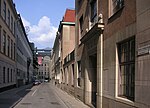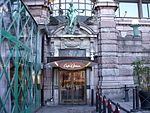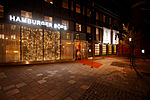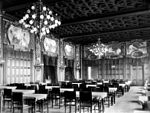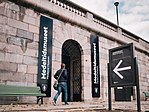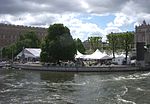Saint James's Church, Stockholm
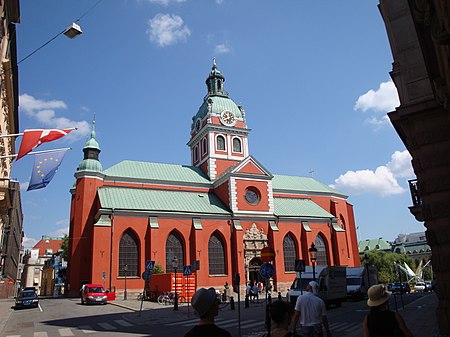
Saint James's Church (Swedish: Sankt Jacobs kyrka) is a church in central Stockholm, Sweden, dedicated to apostle Saint James the Greater, patron saint of travellers. It is often mistakenly called St Jacob's. The confusion arises because Swedish, like many other languages, uses the same name for both James and Jacob. Arguably the most central church in the Swedish capital, surrounded by the popular park Kungsträdgården, the Royal Opera, the square Gustav Adolfs torg; and near Sergels torg, the Royal Palace, and governmental office Rosenbad, the parish of the church was limited to 150 souls in the late 1980s, and was thus merged into the parish of the Stockholm Cathedral in 1989. A bust of Swedish tenor Jussi Björling (1911-1960) stands outside. The church took a long time to complete. As a consequence it includes a wide range of architectural styles, such as Late Gothic, Renaissance and Baroque. The building is based on the design of multiple architects over the centuries: Willem Boy (1580–93), Hans Ferster (1635–43), Göran Joshuae Adelcrantz and Carl Hårleman (1723–35), Carl Möller and Agi Lindegren (1893–94).
Excerpt from the Wikipedia article Saint James's Church, Stockholm (License: CC BY-SA 3.0, Authors, Images).Saint James's Church, Stockholm
Gustav Adolfs Torg, Stockholm Norrmalm (Norrmalms stadsdelsområde)
Geographical coordinates (GPS) Address Nearby Places Show on map
Geographical coordinates (GPS)
| Latitude | Longitude |
|---|---|
| N 59.33 ° | E 18.07 ° |
Address
Operahuset
Gustav Adolfs Torg
103 21 Stockholm, Norrmalm (Norrmalms stadsdelsområde)
Sweden
Open on Google Maps

